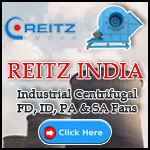Get to Know about HVAC system
Many buildings are equipped with inefficient air-conditioners, which results in air-borne disease, health problems and uncomfortable environment. Today, we have most modern technology in HVAC systems that can ensure adequate fresh air, controlled heating and cooling environment. This article seeks to explain the HVAC system and its functions.
 HVAC is the acronym for “Heating, Ventilation and Air Conditioning” systems, designed to meet home to industrial purpose. HVAC perform four main functions – heating, cooling, ventilation and controlling humidity levels (moisture). They are quiet and considered to be reliable in providing comfortable human conditions.
HVAC is the acronym for “Heating, Ventilation and Air Conditioning” systems, designed to meet home to industrial purpose. HVAC perform four main functions – heating, cooling, ventilation and controlling humidity levels (moisture). They are quiet and considered to be reliable in providing comfortable human conditions.
Earlier, HVAC industries began with oil and gas burners and quality of air-conditioners was regulated by manufacturers. But since the 1900s HVAC industries came with many advancement in furnace technology, high pressure heating systems, high speed centrifugal fans and coils for dehumidifier to improve effective cooling heating and ventilation.
Advancement in technology helped HVAC provide quality, efficient and cost effective air-conditioning equipment to consumers. Today, different organizations have come forward to maintain uniform standards and quality around the globe for improving HAVC system, implement research and share knowledge.
HAVC systems are necessary to maintain room temperature under different climate conditions and are sometimes referred to as climate control. Though there are many HVAC systems, all designs are meant to provide adequate air quality, circulation of fresh air, maintaining room temperature, control over humidity levels and ventilation.
A HVAC system provides two stages of heating or cooling the building using water and air as medium. Water is used in cooling and heating as it is an inexpensive source and can efficiently cool room using chillers and heat using boilers. While air is used as medium to cool or heat the room air condition by use of heating and cooling coils.
The basic functions of HVAC units – Heating, ventilation and cooling
Heating
HVAC are provided with heat pump devices for both heating and cooling the rooms. This works on principles of refrigeration but it works in opposite way. Heat pumps draw heat from the outdoor environment and circulate the hot air in the buildings. But, drawing heat from outdoor freezing environmental condition is uneconomical. Heat pumps that use electricity are more reliable and economical in pruning electricity bills by 30-40%. The advantage of heat pumps comes by reducing the need for purchasing other heating devices.
Ventilation
Ventilation involves continuous exchange air between outdoor to indoor, removing humidity, combustion smoke, smell, dust and even small biological agents (bacteria, mold). Ventilation plays an important role in maintaining indoor air quality, health of people inhabiting the building, which extends life of buildings and avoids stagnant indoor air. HVAC systems provide ventilation by allowing exchange of air from both indoor and outdoor buildings environment. This circulation is controllable in providing air quality.
Cooling
Though air conditioning the entire building is expensive, it is necessary to maintain to improve health and working efficiency in houses or office building’s. Air-conditioners are equipped with indoor (evaporator), outdoor (condenser, compressor) units and a refrigeration line connecting both units. This refrigerant (gas) assists air-conditioner devices to remove the hot air from building’s to provide cooling environment.
The use of HVAC systems is on the rise since it provides comfortable human temperature, controls infections, improves health and efficiency at workplace, etc.
